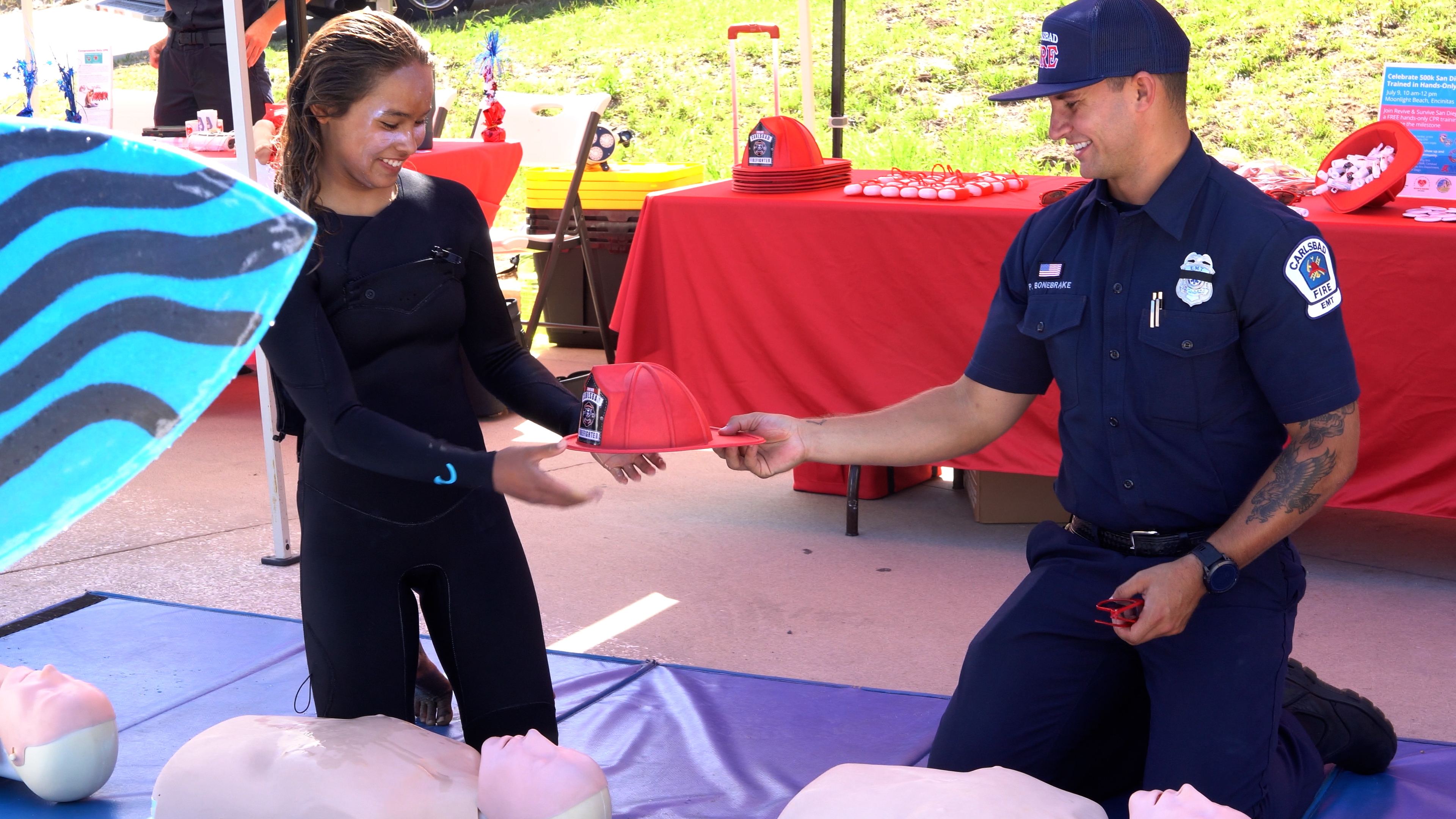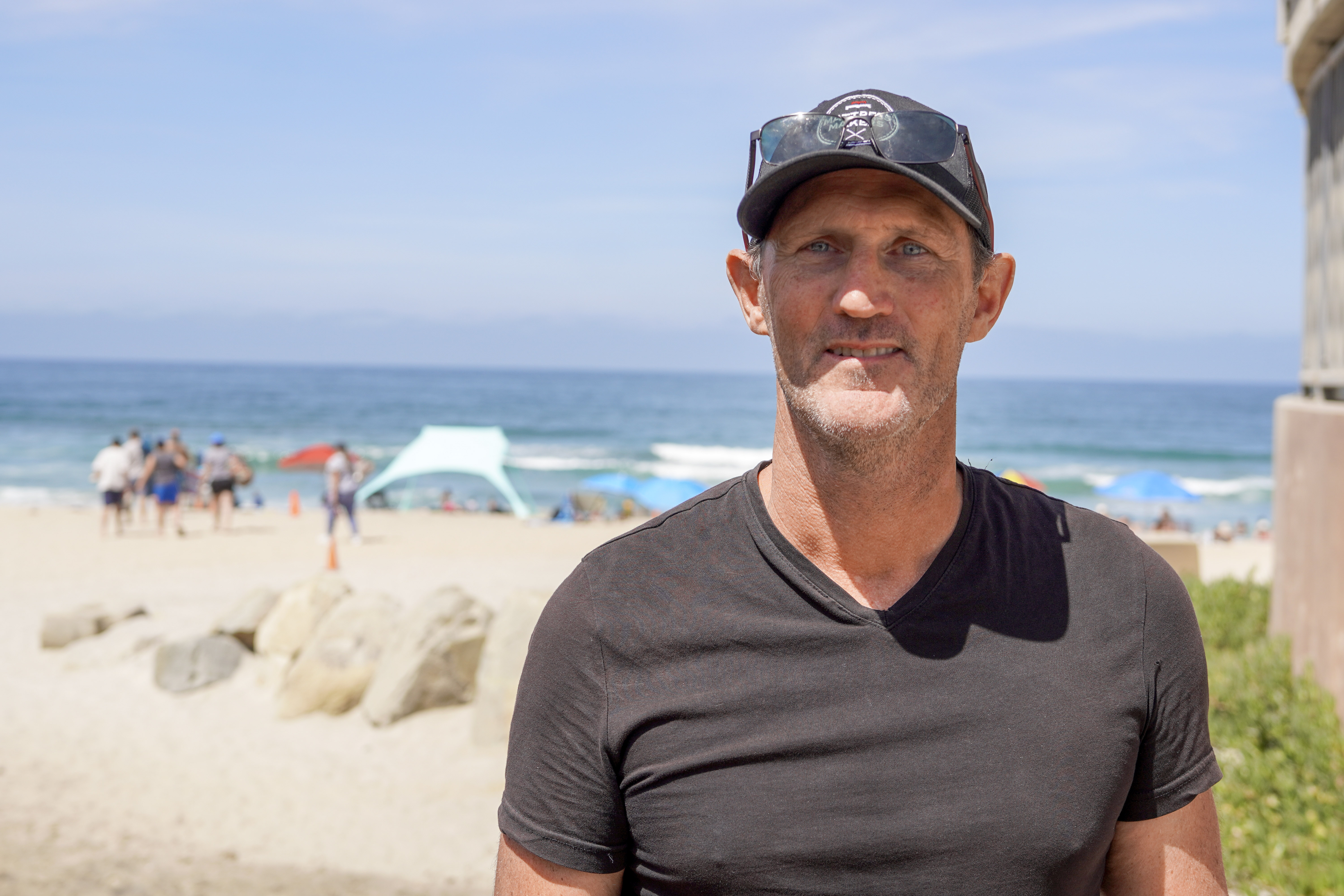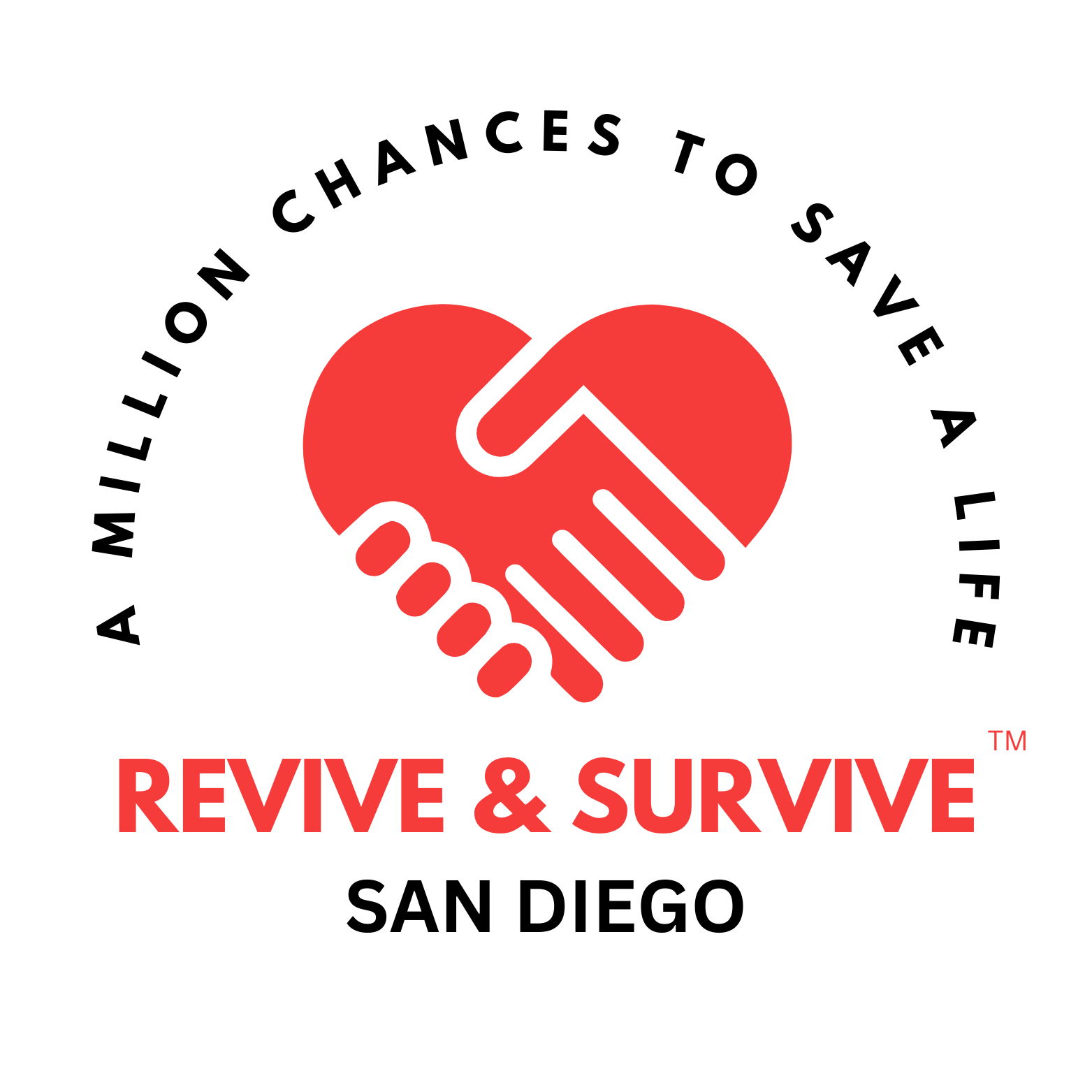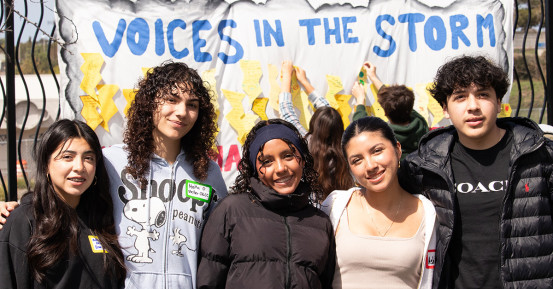Revive & Survive San Diego Event Marks Half a Million People Trained in CPR
Countywide public health initiative to train 1 million San Diegans in hands-only CPR is building a resilient, enduring community of lifesavers
Story by:
Media contact:
Published Date
Story by:
Media contact:
Topics covered:
Share This:
Article Content
A coalition of first responders trained more than 200 people in hands-only cardiopulmonary resuscitation (CPR) at Moonlight State Beach in Encinitas. The event celebrated a major milestone for Revive & Survive San Diego, a groundbreaking public health initiative led by the Herbert Wertheim School of Public Health and Human Longevity Science at University of California San Diego and the County of San Diego Emergency Medical Services.
As of July 9, 2025, the countywide initiative trained 522,364 San Diegans in hands-only CPR — surpassing the halfway mark toward its ambitious goal of training 1 million county residents.
The initiative launched in January 2024 and has already hosted an impressive 13,749 training sessions at schools, businesses, shopping centers, movie theaters, community spaces and parks in collaboration with more than 35 community partners.

“This achievement reflects the promise of public health for uniting communities, saving lives, and building a culture of preparedness. Reaching the halfway point in our goal to train 1 million people demonstrates our shared commitment to prevention and emergency readiness,” said Cheryl A.M. Anderson, Ph.D., M.P.H., UC San Diego Herbert Wertheim School of Public Health and Human Longevity Science dean and co-lead of Revive & Survive San Diego.
“Every person trained is a potential lifesaver, and together, we are creating a safer, more responsive region. Let's carry this momentum forward with urgency, compassion and a continued focus on training 1 million lifesavers.”
Gideon Wiseman was 48 years old when he experienced sudden cardiac arrest while watching television with his wife and young son sitting next to him on the couch. His wife immediately called 911 and began CPR.

“My heart was stopped for over half an hour. But because of the CPR she gave me, and then the paramedics from Encinitas Fire Station 1, my brain stayed alive. Without that, even if I had survived physically, I wouldn’t have had brain function,” said Wiseman. “Learn how to do CPR—fast.”
Breathing New Life Into CPR
By training beachgoers on Wednesday, representatives from AMR San Diego, Carlsbad Fire Department, San Dieguito EMS District, Encinitas Fire Department, San Diego County Fire, Solana Beach Marine Safety, and UC San Diego demonstrated how quick and easy it is to learn hands-only CPR.
In recent years, CPR training has evolved into a hands-only technique proven to be just as effective as giving breaths with compressions. The rescuer needs only perform two easy steps. First, call 911. Second, perform compressions hard and fast at 100 to 120 beats per minute on a bare chest.
By following these simple steps, a bystander can make the difference between life and death for a person whose heart has stopped. Waiting for help to arrive may make it too late to revive the victim. In fact, every minute without CPR decreases a cardiac arrest victim’s chance of survival by 7 to 10 percent.

Globally, cardiac arrest claims more lives than colorectal cancer, breast cancer, prostate cancer, influenza, pneumonia, auto collisions, HIV, firearms and house fires combined, according to the American Heart Association.
Revive & Survive San Diego is a bold reminder that anyone can learn the skills to make a lifesaving difference at home, at work or even at the beach.
“If someone’s heart stops, brain death occurs in as little as four to six minutes without CPR. The first few minutes are critical — and there’s usually no doctor nearby. That’s why it’s so important for everyone possible to know CPR,” said Kristi Koenig, M.D., County of San Diego Emergency Medical Services medical director and co-lead of the Revive & Survive San Diego initiative.
“Revive & Survive San Diego teaches easy, lifesaving CPR so you can help a friend, neighbor, or loved one right away. Emergency crews may be miles away, but doing CPR until they arrive can double a person’s chances of surviving.”
For CPR training events or to become a community partner, visit revivesurvive.ucsd.edu.
You May Also Like
Stay in the Know
Keep up with all the latest from UC San Diego. Subscribe to the newsletter today.




